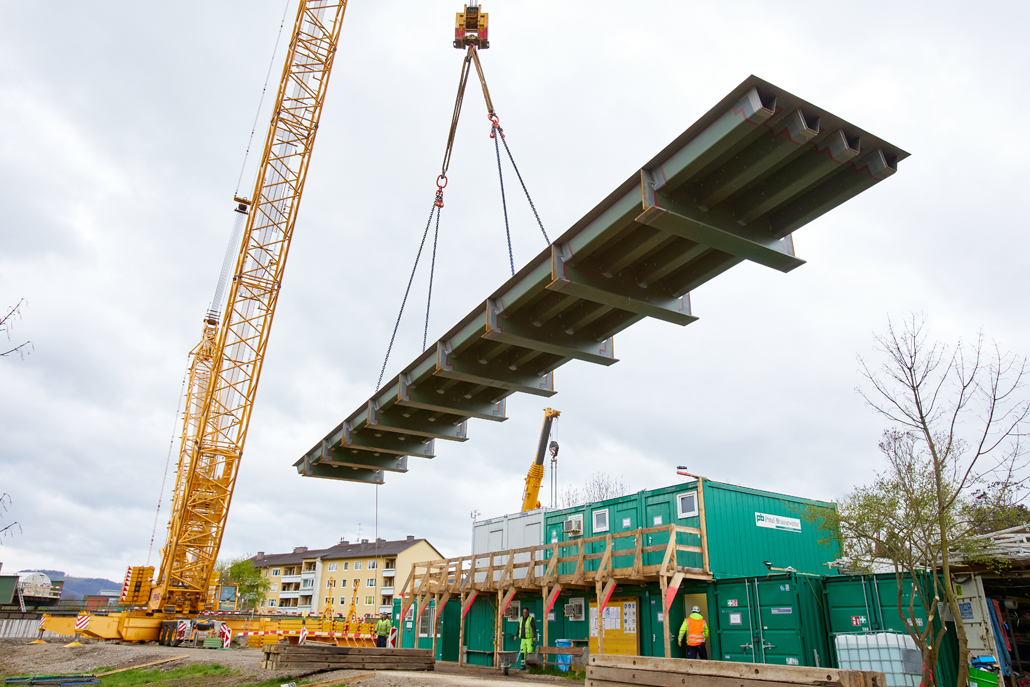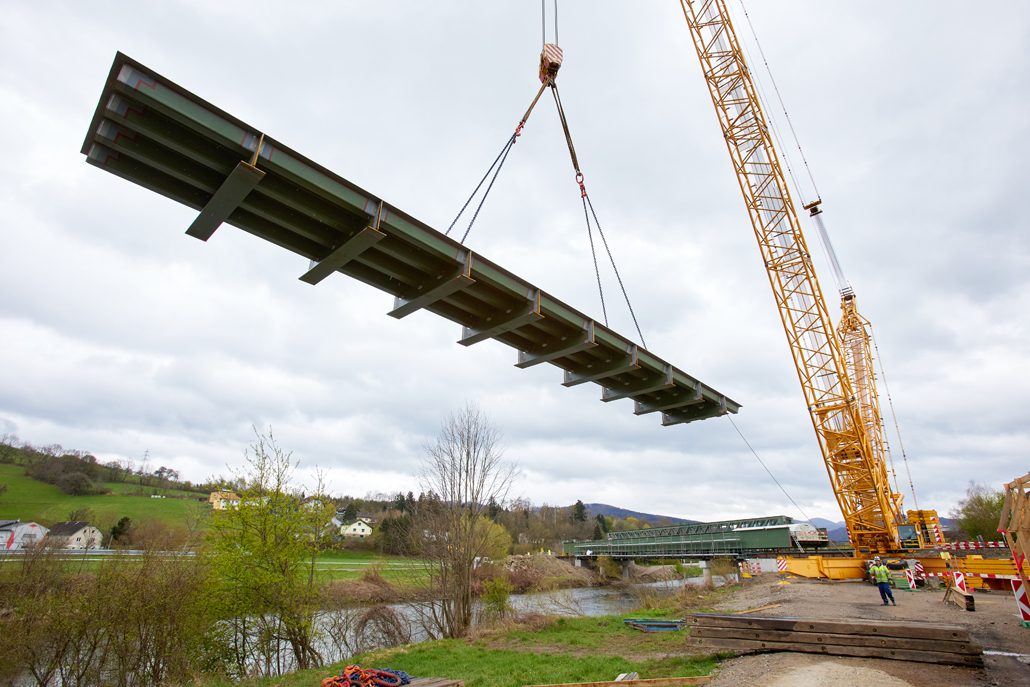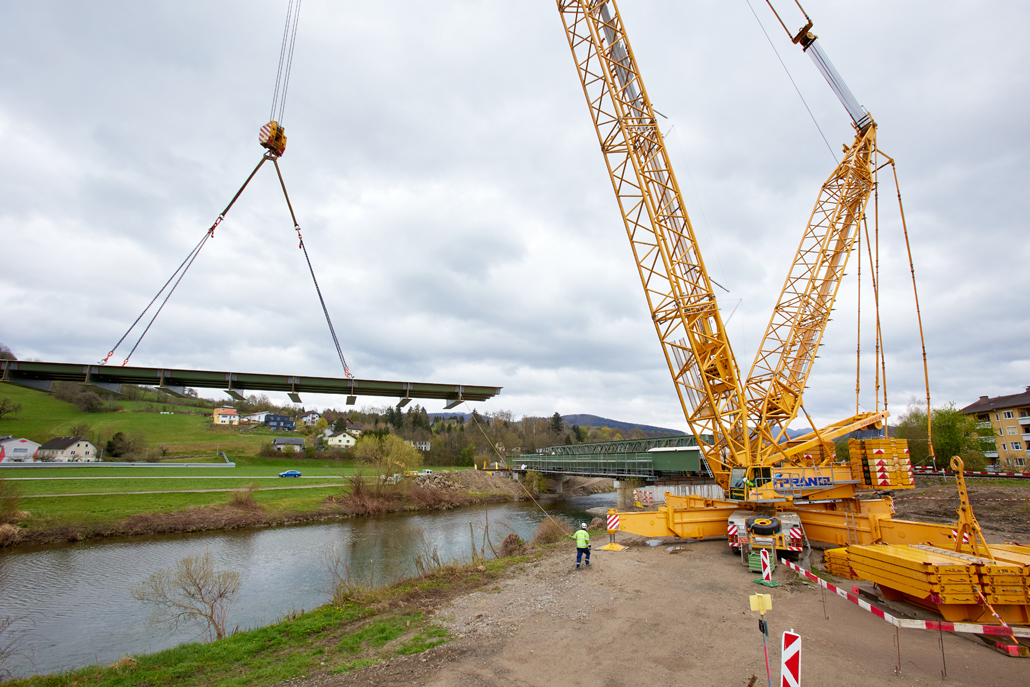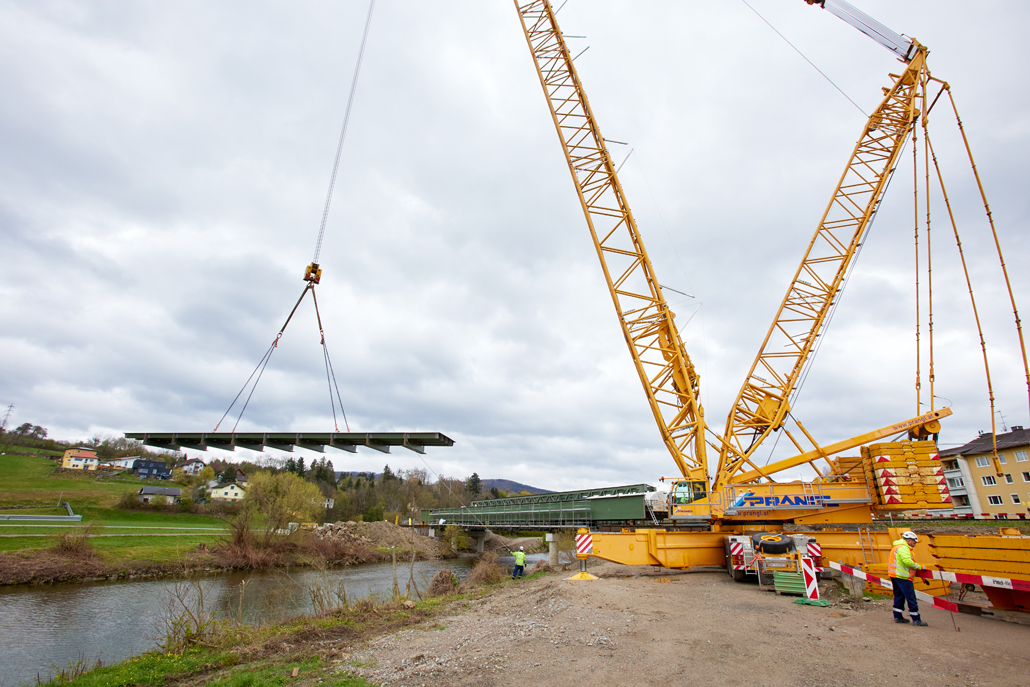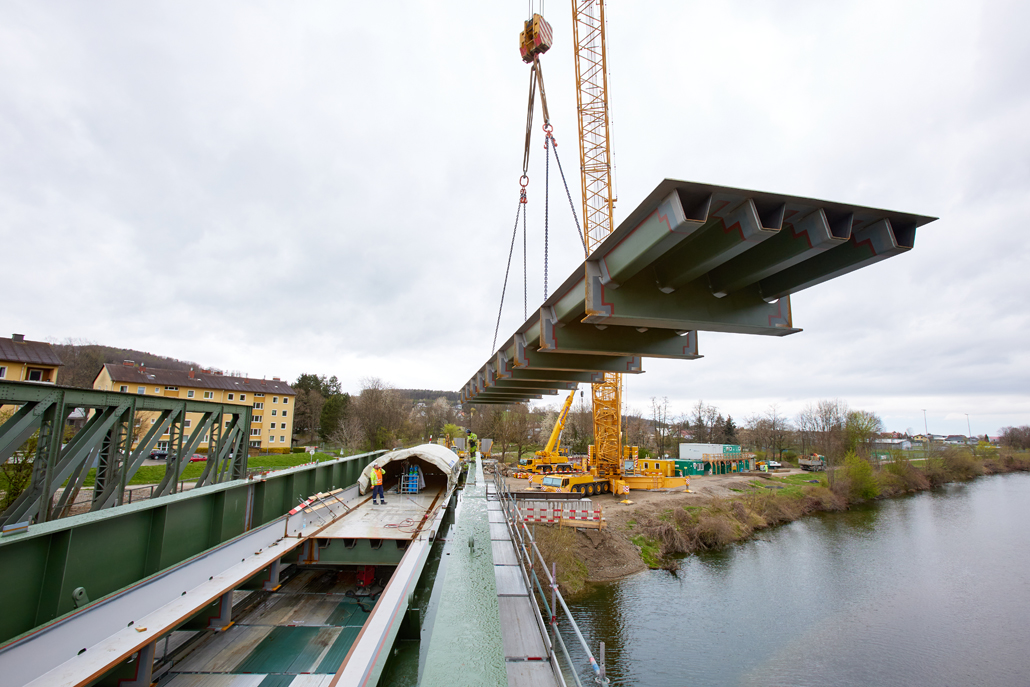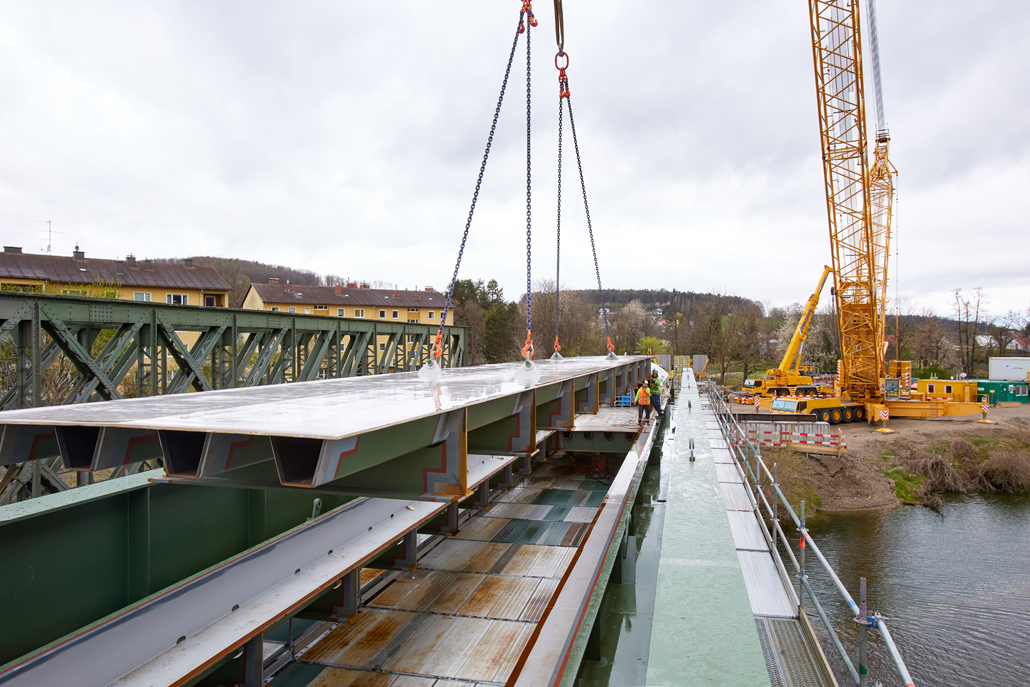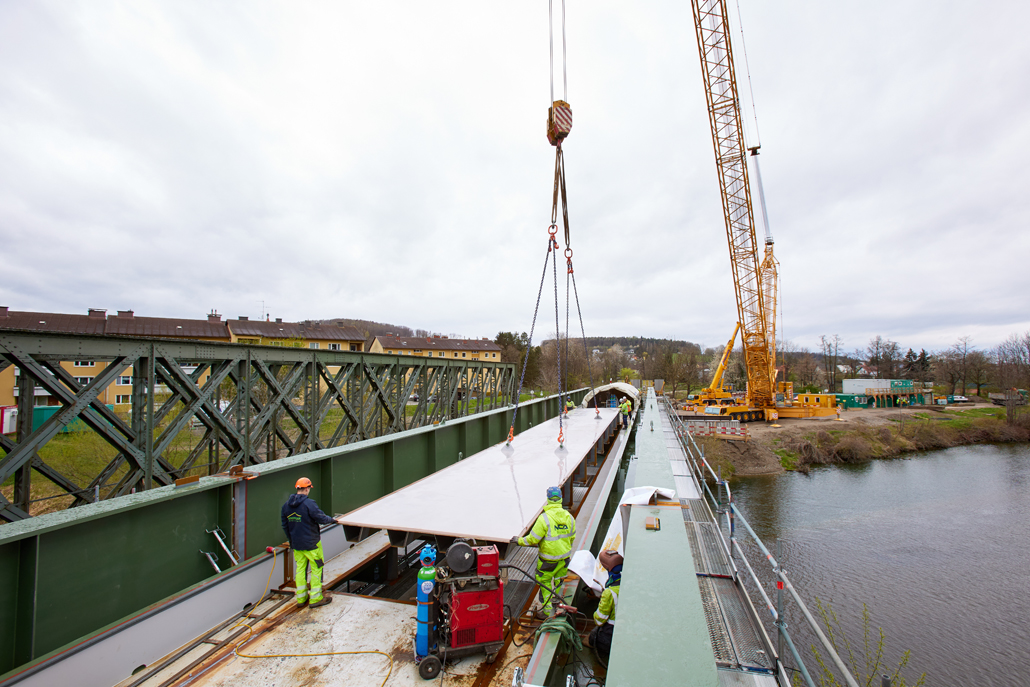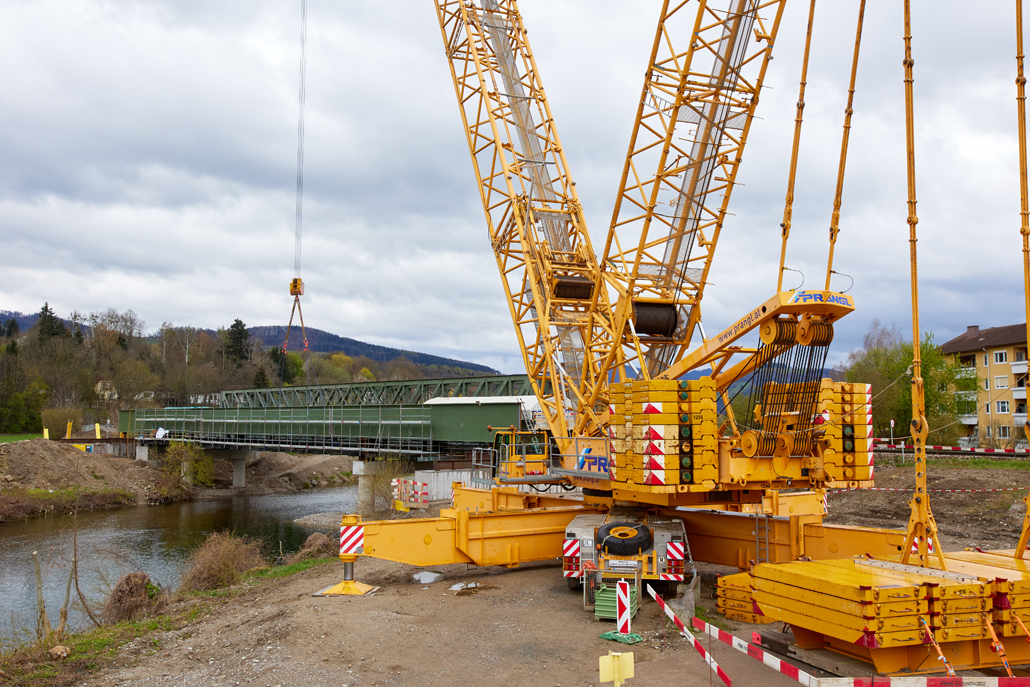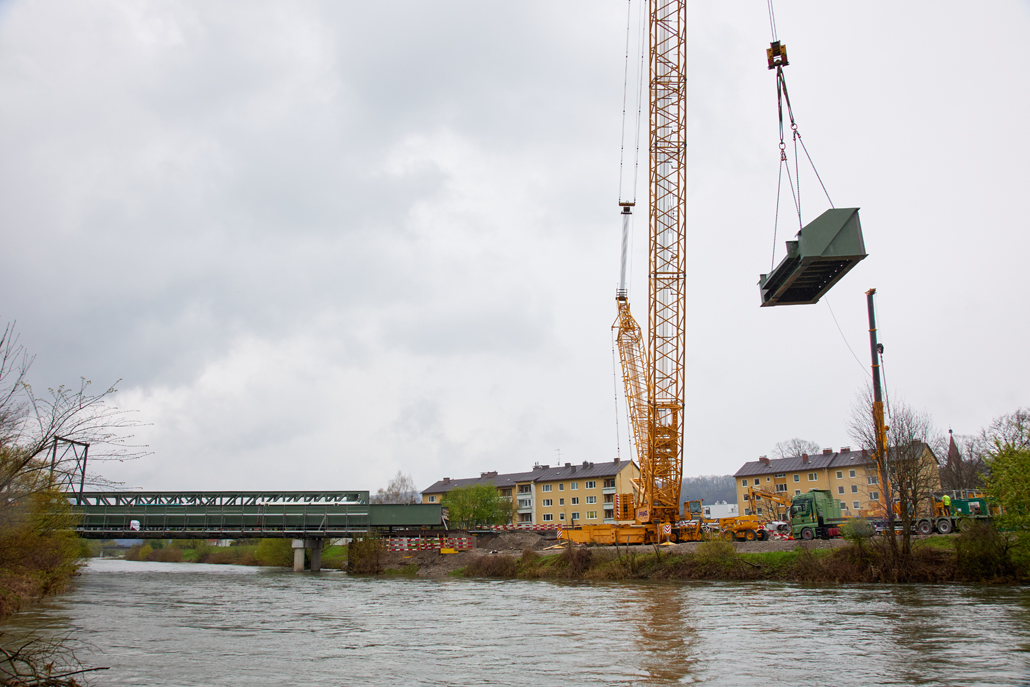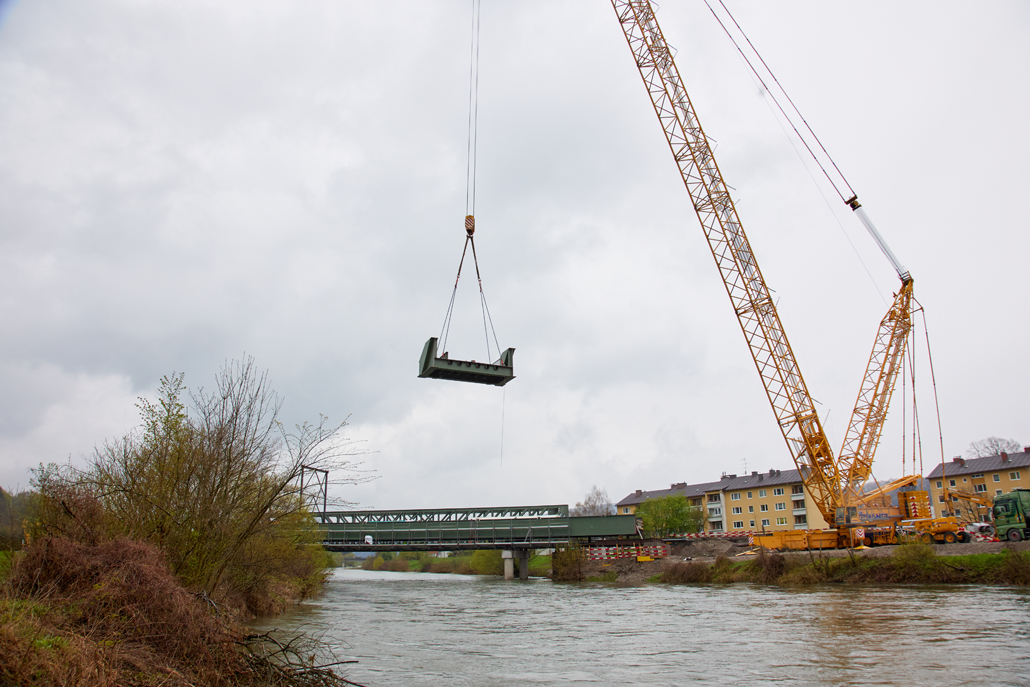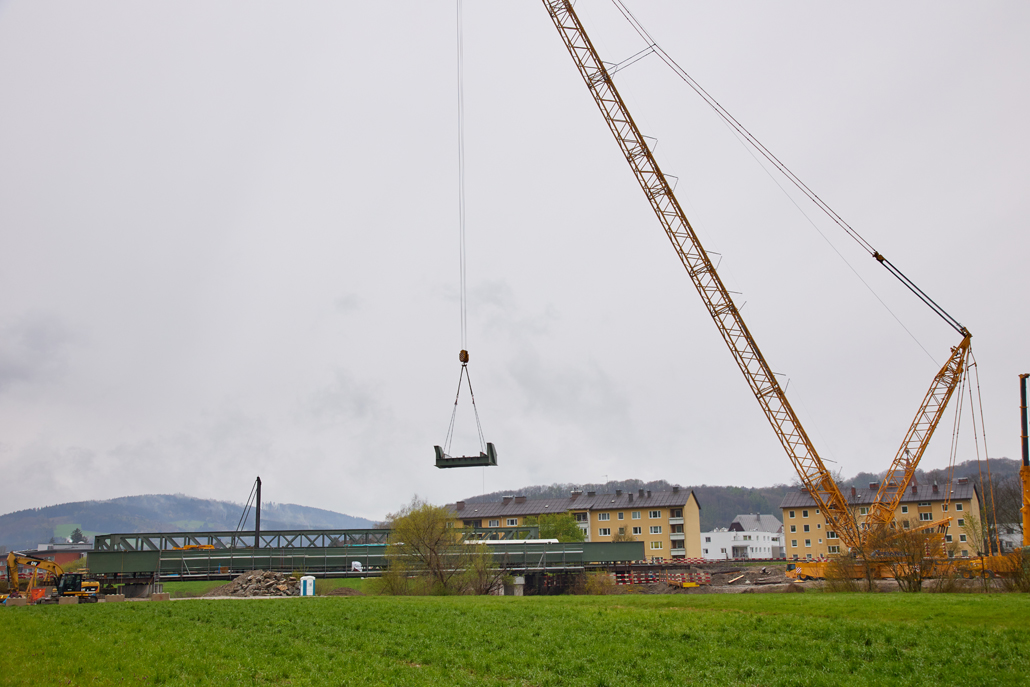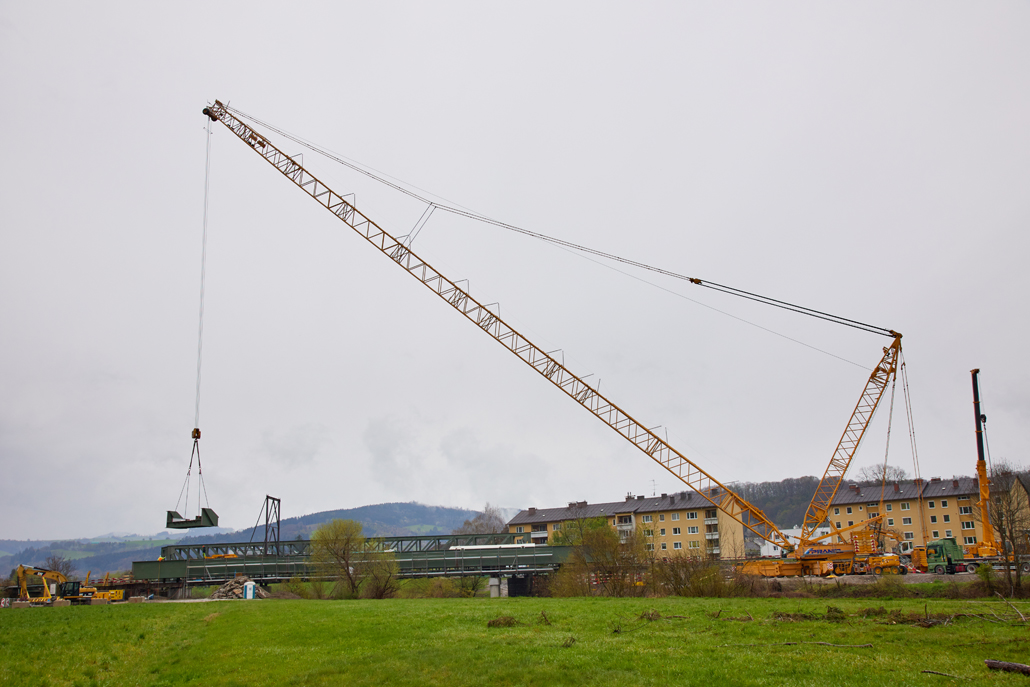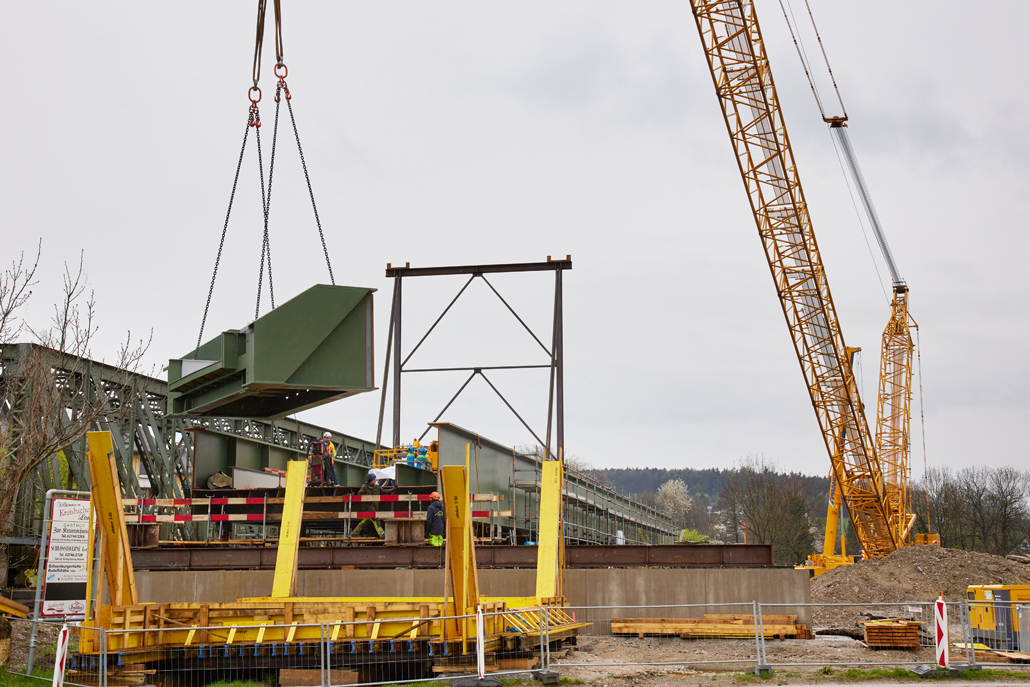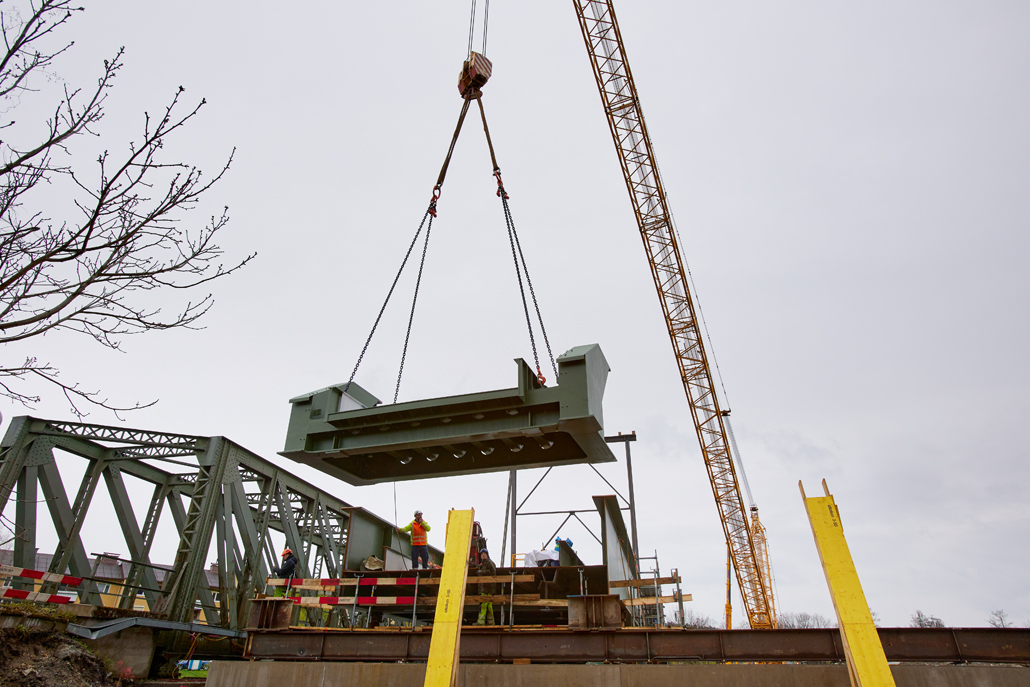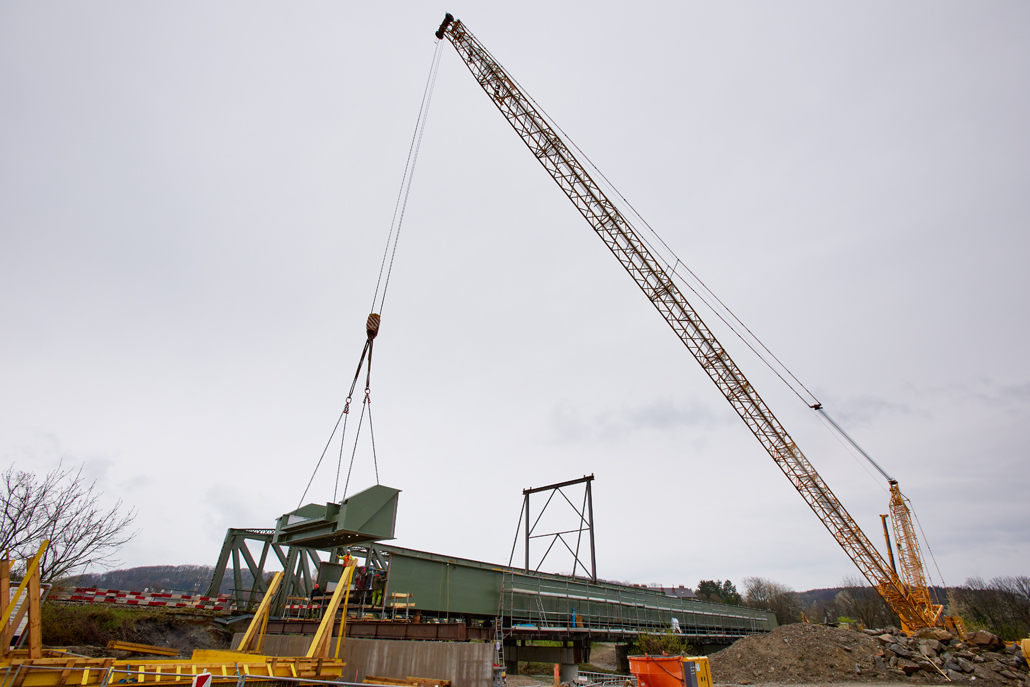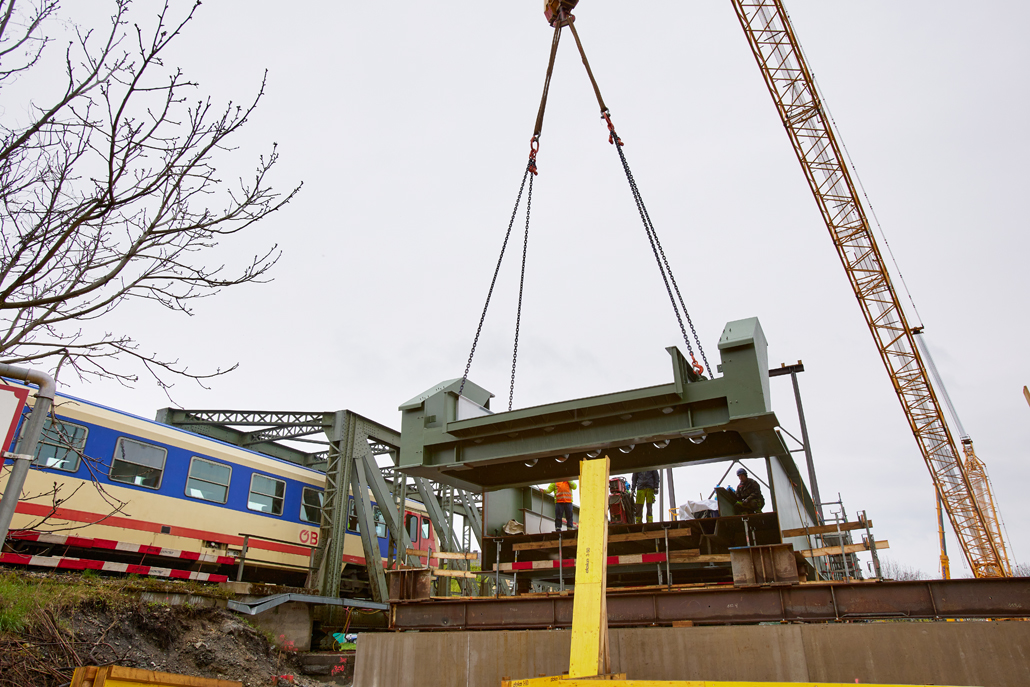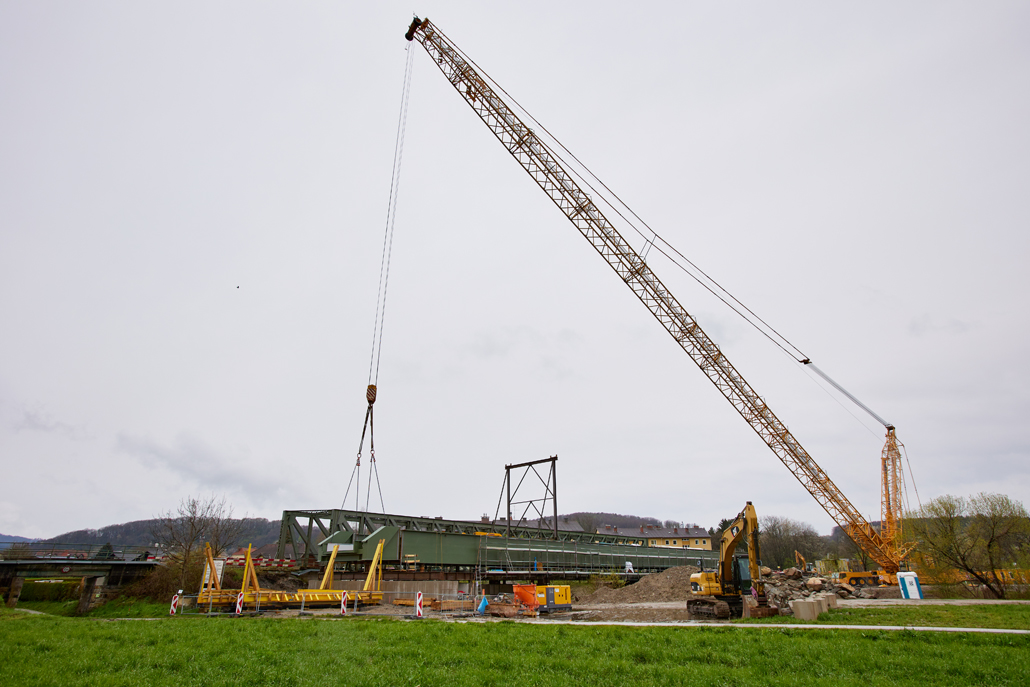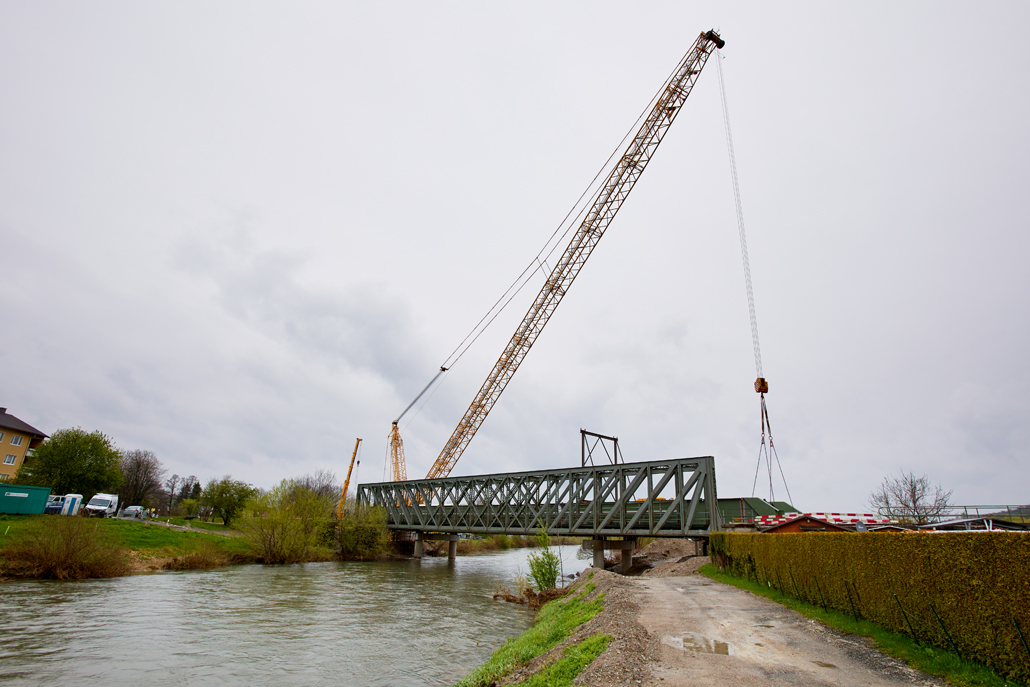Traisenbrücke bridge
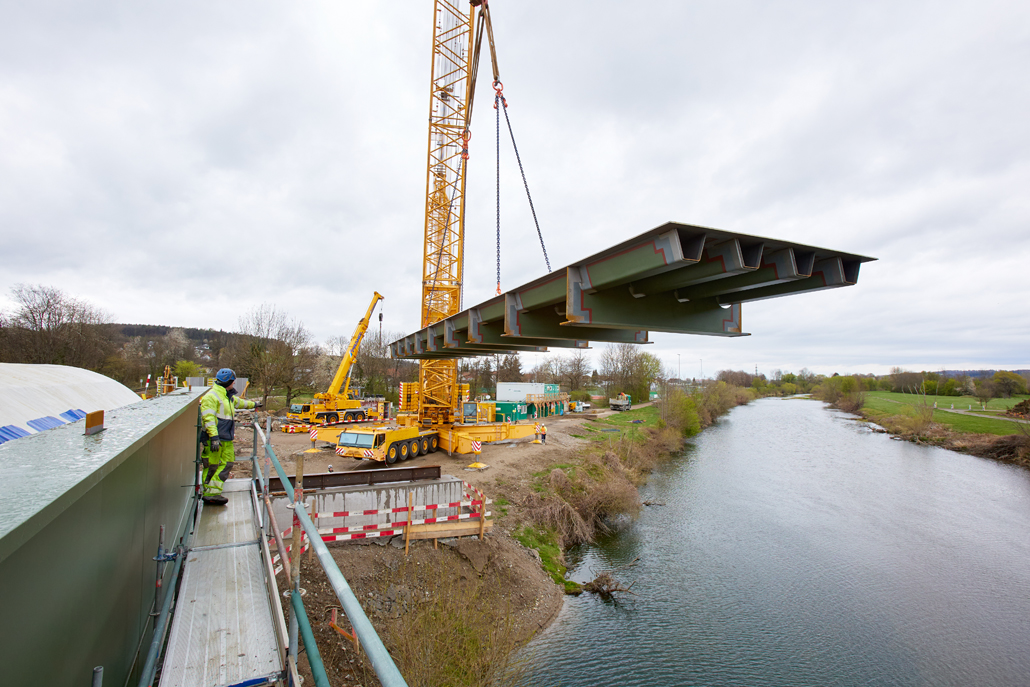
The challenge
New railway bridge over the Traisen river
An ÖBB railway bridge crosses the Traisen river close to the Kreisbach/Wilhelmsburg railway station. Roughly 125 years after its construction, it was time to replace the original structure. The new truss structure was prefabricated and delivered in parts by a specialist bridge construction company. Prangl was commissioned to play a leading role in the bridge building project.
Our solution
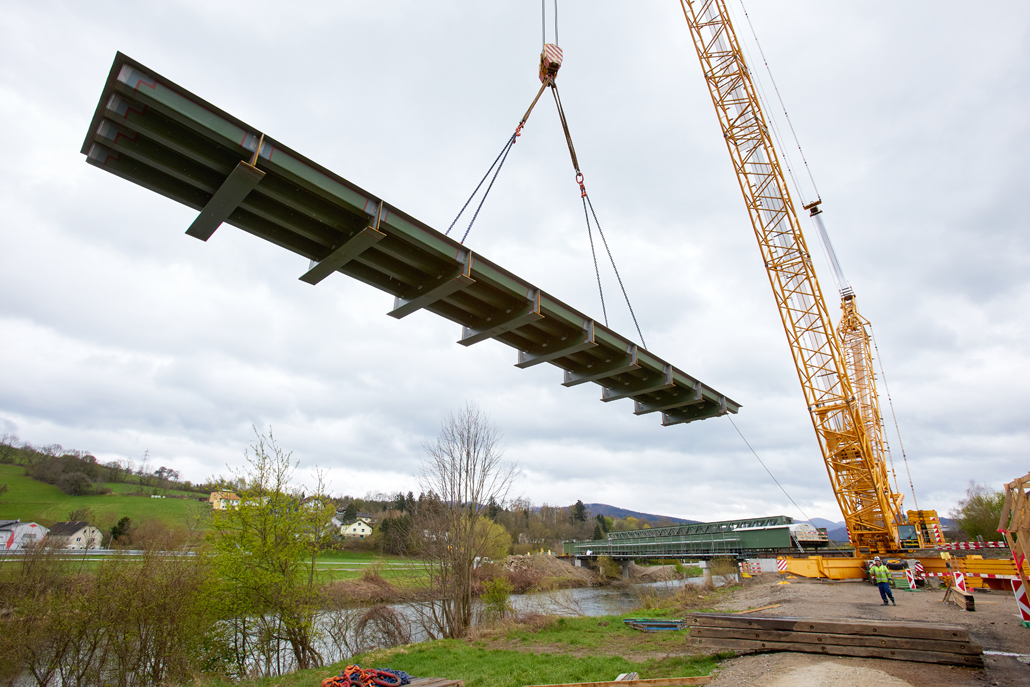
Solid preparation is everything!
The Prangl team responsible for the project initially faced extensive preparatory works - not just in terms of logistics, crane selection and manpower planning; access to the area around the bridge in particular proved very difficult because the route crossed a goods road and bridge along it, which had an undefined load-bearing capacity. Following preliminary testing, it was therefore necessary to assume that this overpass was capable of bearing a total weight of 96 tonnes, which meant the access bridge had to be approved by a structural engineer.
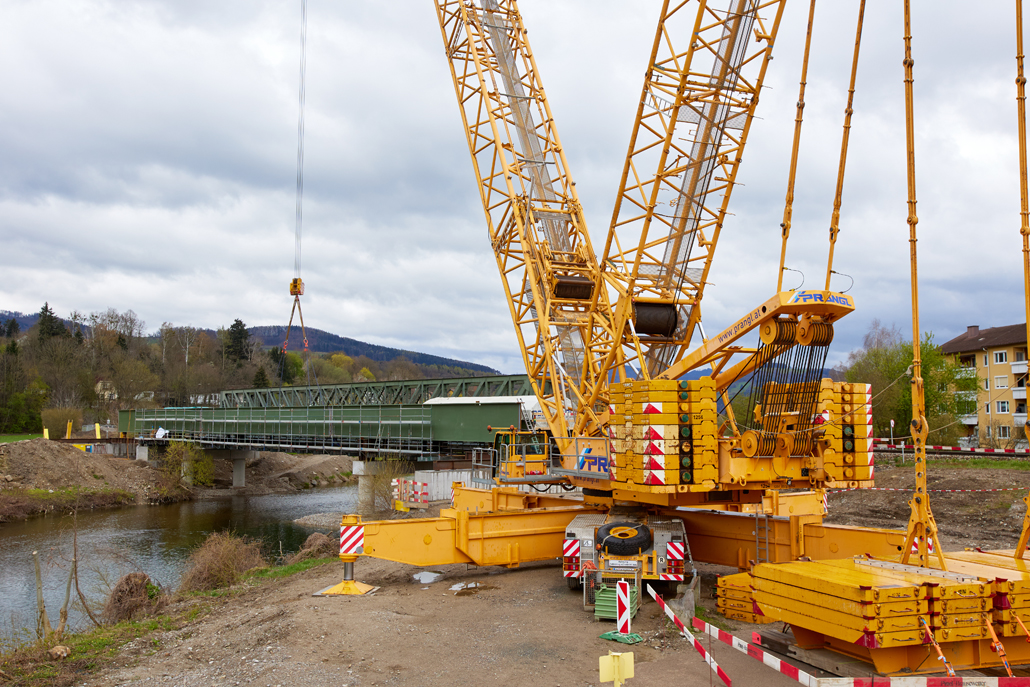
Crane parking concept devised in-house
Preparations for the actual crane operations also challenged the experience of the specialists in yellow and required that a separate crane parking site be readied - with concrete piles driven 8 metres deep alongside the Traisen. Furthermore, it transpired that an underground gas pipeline had been laid in the vicinity of the crane parking area, for which all ambiguities had to be clarified and experts consulted for investigation and approval prior to starting the works. The crane erection itself also proved tricky due to the limited space on site.
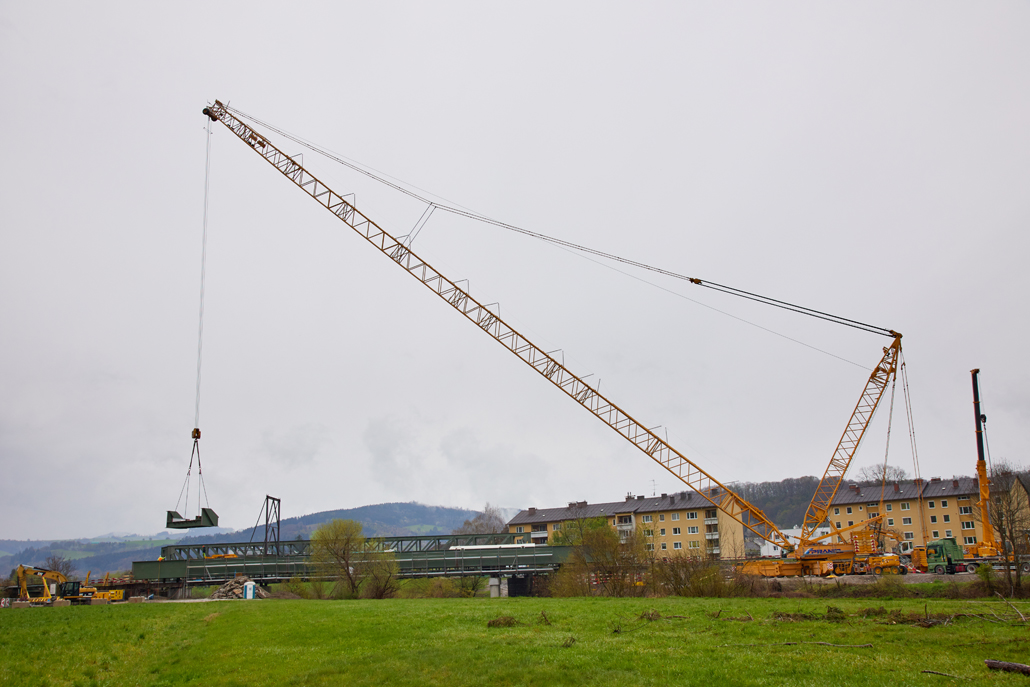
600 tonne lattice boom crane
The main crane required a great deal of space: A 600 tonne lattice boom crane was the optimum choice due to the vast boom projection of 114 metres and the lifting weight (the heaviest bridge components weighed in at 36 tonnes). Meanwhile, a 100-tonne telescopic crane acted as an erection or auxiliary crane. Its task was to lift and "float" the ballast from the ballast table. Several other pieces of equipment were also used for preparation and follow-up work: a 45-tonne truck-mounted crane, an 85-tonne loader crane, a telehandler and an articulating boom lift. Once well prepared, the project could get going.

Team spirit leads to success
The lattice boom crane brought the parts of the truss bridge (weighing in at several tonnes) into position according to plan, where they were then welded and assembled. Piece by piece, the bridge was put together and with each part it grew. Those responsible for executing the project could not be halted by all the difficulties that arose beforehand, or by the sudden "onset of winter" that came about at the end of March - which of course made the work even more difficult. The exemplary team spirit ensured that this challenging project was completed to the utmost satisfaction of all parties involved.

